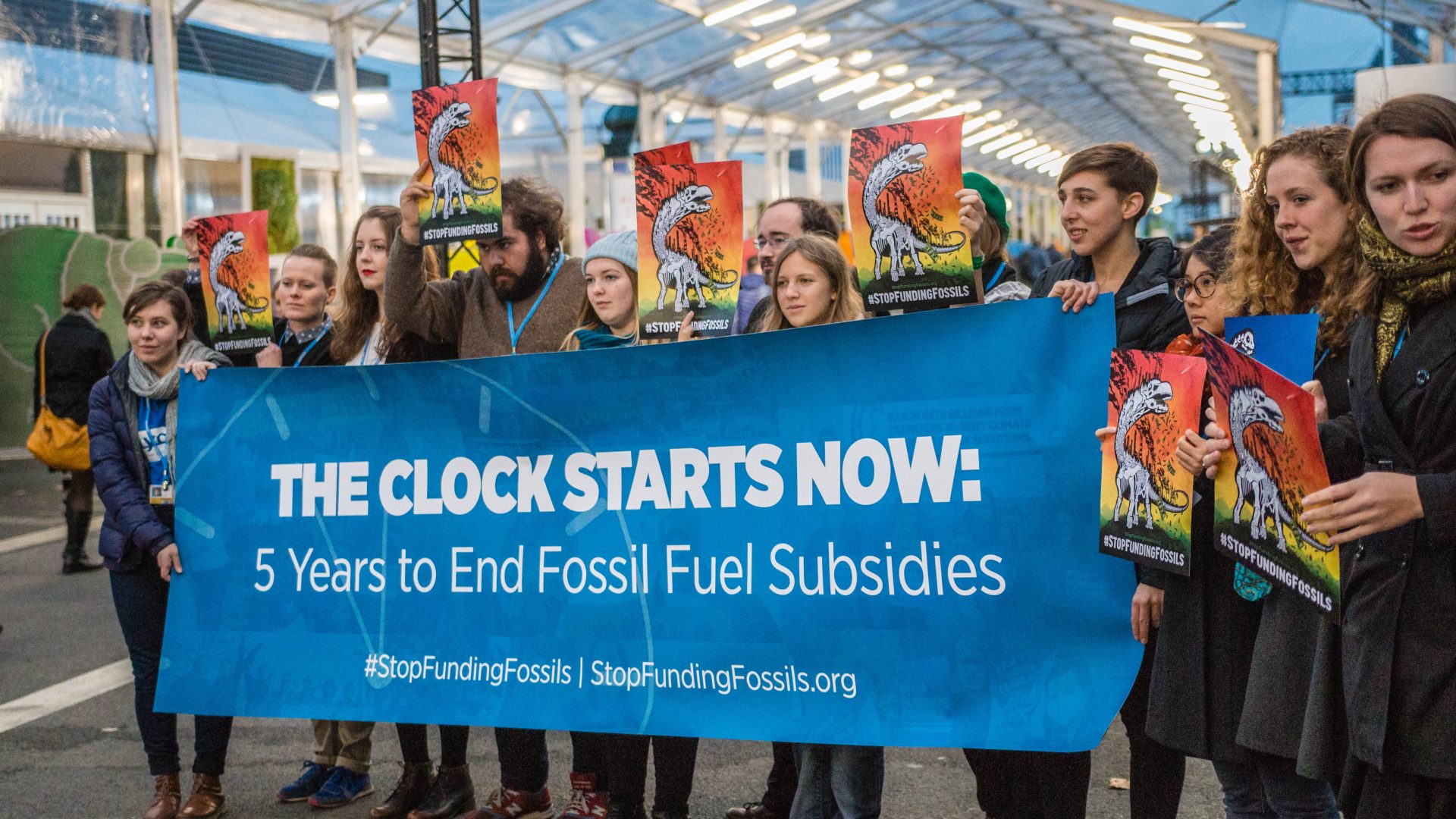
New study shows axing fossil fuel subsidies can deliver big climate benefits (but press release says the opposite)
A study published today, by a group led by the International Institute for Applied Systems Analysis (IIASA), indicates that eliminating fossil fuel subsidies could curb global greenhouse gas emissions by as much as 5% through 2030 while saving hundreds of billions of dollars in public money. Despite this seemingly good news, the framing of the study was strangely downbeat, casting these reductions as “only a small effect on CO2 emissions.” What we know from reading the actual findings of this study, as well as several other analyses of the climate impacts of fossil fuel subsidy removal, is that nixing oil, gas, and coal subsidies would be a big win for the climate, would saves money, and could free up resources to help the poorest and most vulnerable.
A study published today, by a group led by the International Institute for Applied Systems Analysis (IIASA), indicates that eliminating fossil fuel subsidies could curb global greenhouse gas emissions by as much as 5% through 2030 while saving hundreds of billions of dollars in public money. Despite this seemingly good news, the framing of the study was strangely downbeat, casting these reductions as “only a small effect on CO2 emissions.” What we know from reading the actual findings of this study, as well as several other analyses on the climate impacts of fossil fuel subsidy removal, is that nixing oil, gas, and coal subsidies would be a big win for the climate, would save money, and could free up financial resources to help the poorest and most vulnerable.
Setting aside some serious methodological issues with the new study, its authors draw some curious conclusions from their results. The analysis finds that a single policy tool – fossil fuel subsidy removal – could deliver emissions reductions equivalent to one-quarter of all current country commitments under the landmark Paris Agreement on climate change. That’s a big deal, especially when you consider that governments would save hundreds of billions of dollars in the process. When it comes to fossil fuel subsidy removal, it’s not a question of how much these emissions reductions will cost government, but a question of how much governments can save while also significantly reducing emissions. Ending fossil fuel subsidies would free up scarce public money for priorities like education, healthcare, and clean energy.
While there is no single silver bullet solution that will address the majority of global greenhouse gas emissions, eliminating fossil fuel subsidies is an obvious way to harvest low-hanging fruit, and, despite the odd framing, this study’s findings seem to confirm that eliminating fossil fuel subsidies has the potential to make a major contribution to global climate action.
Coming back to the problems with the study’s methodology, perhaps the study’s biggest failing is that it considers only the dollar value of subsidies to fossil fuel producers – not their real-world impact on fossil fuel production and investment decision-making. Another recent peer-reviewed study by the Stockholm Environment Institute (SEI), published in the journal Nature Energy, took a more bottom-up approach to the question of subsidies and their impact on fossil fuel production and emissions. It assessed how oil subsidies could influence investor decision-making and found that the impact of subsidies on oil production (and associated emissions) in the U.S. was potentially very high. In fact, the SEI study found that without federal and state subsidies, nearly half of future U.S. oil production would be unprofitable at $50-per-barrel oil prices.
This finding underscores the importance of understanding how subsidies impact investor decisions, something that the global models used by IIASA can’t tell us. That’s not the only methodological issue: their study also undercounts subsidies to oil, gas, and coal production, relying on an estimate of $23 billion in production subsidies instead of the more than $70 billion we’ve identified in G20 countries alone. While the study conducts a sensitivity analysis that includes one scenario with higher levels of production subsidies, the fact that the model’s outputs seem to barely register a tripling of production subsidies raises some questions, especially in light of the findings of the other recent U.S. study led by the Stockholm Environment Institute and EarthTrack described above.
This failure to consider the real-world effects of fossil fuel subsidies at the national level shows up not only in the IIASA study’s findings, but also in some of the commentary from the authors that surrounded its release. When asked about fossil fuel subsidies in the U.S., the study’s lead author says “[t]he U.S. can remove them. They’re so small.”
I’d agree with that first assertion, but certainly not the second. Our research has found that U.S. subsidies to oil, gas, and coal producers average more than $20 billion each year. That’s not chump change. In fact, it’s enough to buy a lot of political influence through campaign contributions and spending on lobbying. By eliminating handouts to the fossil fuel industry, U.S. leaders could also advance climate action more broadly by loosening the stranglehold industry has on our political processes.
While flawed, it’s important to note that this IIASA’s new study has merit. It’s an important contribution to ongoing efforts to develop new analytical approaches that allow us to better understand the pernicious effects of fossil fuel subsidies. It’s only unfortunate that the study’s framing was so out of step with its central conclusion that eliminating even some fossil fuel subsidies could deliver significant climate benefits.
